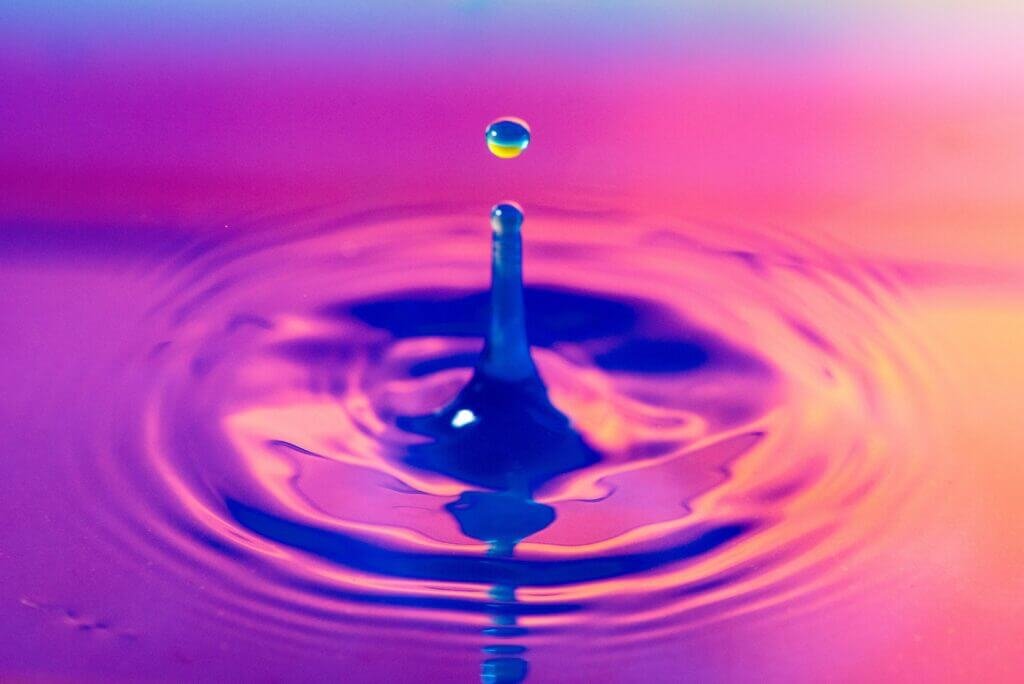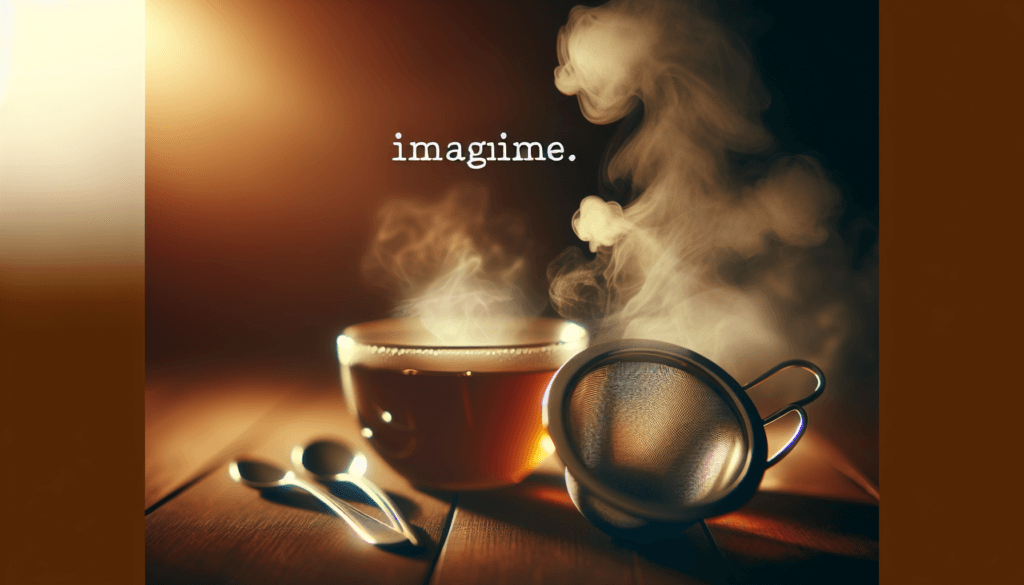Imagine being able to brew the perfect cup of specialty tea every time, with just the right balance of flavors and aromas. The secret lies in the water temperature used for steeping, as it can greatly influence the taste and quality of your tea. In this article, we will explore the importance of water temperature when brewing specialty tea and guide you towards finding the ideal temperature for a truly delightful tea experience. Discover the magical world of tea brewing, and unlock the key to a perfectly steeped cup of your favorite specialty tea.

Factors Affecting Tea Steeping
Tea Varieties
Tea varieties play a crucial role in determining the optimal water temperature for steeping. Different teas, such as green, black, white, oolong, and herbal infusions, have unique flavor profiles that can be enhanced or diminished by the water temperature used. Understanding the characteristics of each tea variety is essential for achieving the best flavor extraction.
Leaf Grade
The grade of tea leaves is another factor to consider when determining water temperature for steeping. Higher-grade teas, such as whole-leaf or large-leaf teas, require lower water temperatures to prevent the leaves from becoming bitter. On the other hand, lower-grade teas, like broken or dust teas, can withstand higher water temperatures without compromising flavor. It is important to choose the appropriate water temperature based on the quality of your tea leaves to ensure a delightful cup of tea.
Steeping Vessel
The type of vessel used for steeping tea also influences the ideal water temperature. Clay or ceramic teapots retain heat better than glass or stainless steel, requiring slightly lower water temperatures for steeping. Additionally, the size and material of the infuser or strainer used can affect the rate of heat transfer, which in turn impacts the steeping process. Taking into account the vessel you use is crucial to achieve the desired taste and aroma in your cup of tea.
Water Quality
Water quality is often overlooked but plays a significant role in the final flavor of steeped tea. The mineral content and pH level of water can affect the extraction of flavors from tea leaves. Hard water, which contains high mineral content, can potentially mask or alter the taste of tea. Conversely, soft water with low mineral content may result in a weaker brew. Using filtered or spring water with a balanced mineral composition is recommended to enhance the flavors of your specialty tea.
Understanding Water Temperature
Effects of Temperature on Tea Steeping
Temperature plays a vital role in flavor extraction when steeping tea. The right water temperature can unlock the full range of flavors and aromas present in the tea leaves, while an incorrect temperature can lead to a bitter or lackluster brew. Heat causes the compounds within the tea leaves to release into the water, resulting in the characteristic flavors of the tea. Different types of tea require specific temperature ranges to extract the desired flavors effectively.
Types of Tea Temperature Ranges
Each type of tea has its own optimal temperature range for steeping, allowing the specific flavors and characteristics of that tea to develop fully. The following temperature ranges are general guidelines and can be adjusted based on personal preferences:
- Green and White Tea: 160°F to 180°F (71°C to 82°C)
- Black Tea: 200°F to 212°F (93°C to 100°C)
- Oolong Tea: 190°F to 205°F (88°C to 96°C)
- Herbal and Fruit Infusions: 200°F to 212°F (93°C to 100°C)
By understanding and applying these temperature ranges, you can optimize the flavor extraction and brewing experience for each type of tea.

Green and White Tea
The Delicate Tea Types
Green and white teas are known for their delicate flavors and subtle nuances. These teas are minimally oxidized, allowing their natural sweetness and light floral notes to shine through. To preserve their delicate nature, it is essential to use lower water temperatures for steeping. Higher temperatures can result in a bitter or astringent taste, overpowering the delicate flavors of the tea.
Temperature Ranges for Steeping
For green and white teas, it is recommended to steep them at temperatures ranging from 160°F to 180°F (71°C to 82°C). This range allows for gentle extraction of flavors without scorching the more fragile tea leaves. Adjusting the steeping time within this temperature range can also affect the strength and flavor profile of the tea. Experimenting with shorter or longer steeping times can help you find the perfect balance for your preferred taste.
Black Tea
The Bold and Robust Tea
Black tea is known for its strong, robust flavor profile, making it a popular choice for those seeking a bolder cup of tea. Unlike green or white teas, black tea undergoes full oxidation, resulting in a more pronounced taste. To unlock the full flavor potential of black tea leaves, a higher water temperature is required.
Temperature Ranges for Steeping
For black teas, it is recommended to steep them at temperatures ranging from 200°F to 212°F (93°C to 100°C). This higher temperature allows the bold flavors and rich aromas to fully develop within the teas. Steeping black tea at lower temperatures may result in a milder and less flavorful brew.

Oolong Tea
The Semi-Oxidized Tea
Oolong tea falls between green and black tea in terms of oxidation levels, resulting in a unique flavor profile that combines elements of both types. Its taste can range from light and floral to dark and roasted, depending on the specific oolong tea variety. Finding the right water temperature for steeping can bring out the desired balance of flavors in oolong tea.
Temperature Ranges for Steeping
For oolong teas, it is recommended to steep them at temperatures ranging from 190°F to 205°F (88°C to 96°C). This range allows the tea leaves to fully unfurl and release their flavors without becoming overly bitter. The exact temperature within this range can be adjusted based on personal preference and the specific oolong tea variety being brewed.
Herbal and Fruit Infusions
Caffeine-Free Options
Herbal and fruit infusions offer a wide range of caffeine-free alternatives to traditional tea. These infusions often consist of various herbs, flowers, fruits, and spices, resulting in a diverse array of flavors and aromas. Unlike tea made from Camellia sinensis leaves, herbal and fruit infusions are not as sensitive to water temperature and can handle higher temperatures without becoming bitter.
Temperature Ranges for Steeping
Herbal and fruit infusions can be steeped at temperatures ranging from 200°F to 212°F (93°C to 100°C). The higher temperature helps to extract the flavors from the various ingredients, resulting in a robust and flavorful infusion. Feel free to experiment with steeping times within this temperature range to customize the strength and taste of your herbal or fruit infusion.

Factors to Consider
Desired Strength and Flavor
When determining the water temperature for steeping specialty tea, it is important to consider your desired strength and flavor profile. Stronger, bolder teas like black teas may require higher temperatures to extract their full potential. Conversely, delicate teas like green or white teas may require lower temperatures to avoid overpowering the subtle flavors. Understanding your preference for strength and flavor can help guide your water temperature selection.
Quality and Freshness of Tea Leaves
The quality and freshness of tea leaves also impact the water temperature used for steeping. High-quality, whole-leaf teas often require lower temperatures to prevent bitterness, while lower-grade teas can tolerate higher temperatures. Additionally, older tea leaves may benefit from higher temperatures to enhance flavor extraction. Ensuring the freshness and quality of your tea leaves will contribute to a better brewing experience.
Personal Preference
Lastly, personal preference plays a significant role in determining the ideal water temperature for steeping specialty tea. Some individuals prefer stronger, more bitter flavors, while others enjoy milder, sweeter taste profiles. It is essential to experiment with different water temperatures and steeping times to discover the perfect balance that suits your unique palate.
Experimenting with Water Temperature
Trial and Error Approach
Experimenting with water temperature is a fun and educational way to customize your tea steeping experience. The trial and error approach involves steeping the same tea using various water temperatures and comparing the resulting brews. This method allows you to identify the temperature range that best brings out the flavors you enjoy most.
Tasting Different Steeping Temperatures
Another approach to experimenting with water temperature is to purposefully steep your tea at different temperatures to taste the nuances in flavor. By preparing multiple cups, each steeped at a specific temperature, you can compare the taste profiles side by side. This hands-on exploration allows you to gain a deeper understanding of how different water temperatures affect the flavor and complexity of your specialty tea.
Conclusion
Water temperature is a critical factor when steeping specialty tea. The optimal temperature can bring out the unique flavors and characteristics of each tea variety, enhancing your overall tea experience. By considering the type of tea, leaf grade, steeping vessel, water quality, and personal preferences, you can select the appropriate water temperature for the perfect cup of tea. Don’t be afraid to experiment with different temperatures and steeping methods to discover what works best for you. So go ahead, brew your favorite tea and savor each sip knowing you’ve found the perfect water temperature for your cup of comfort and delight.


